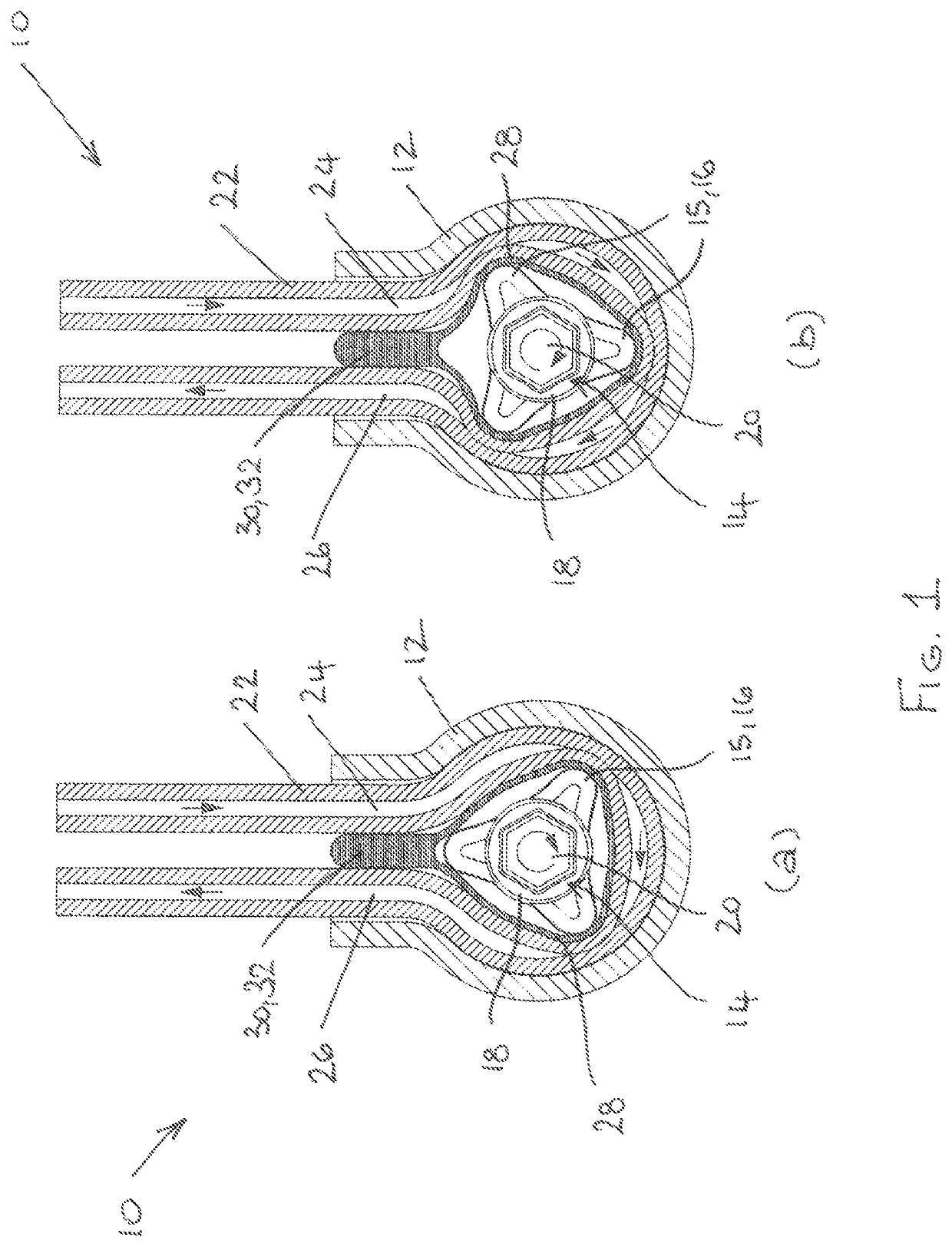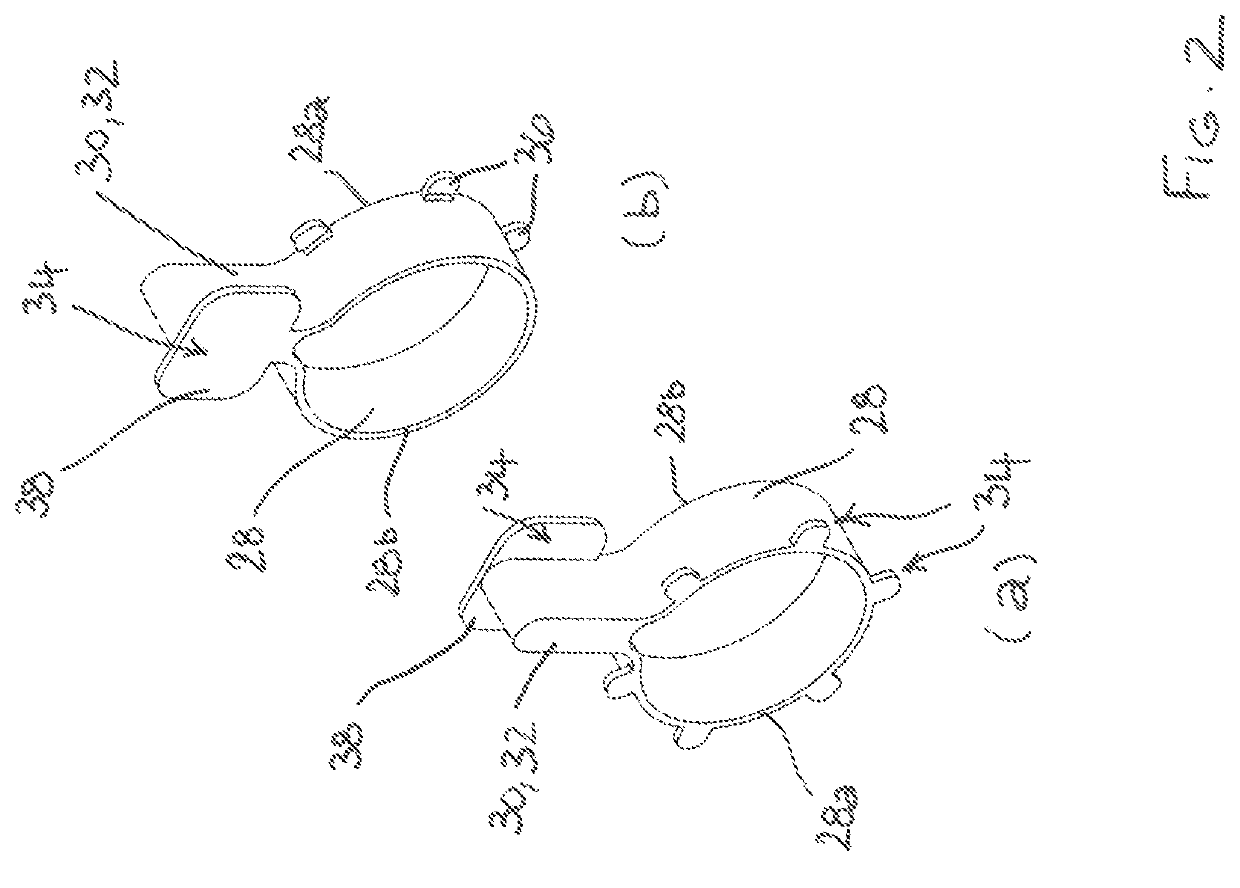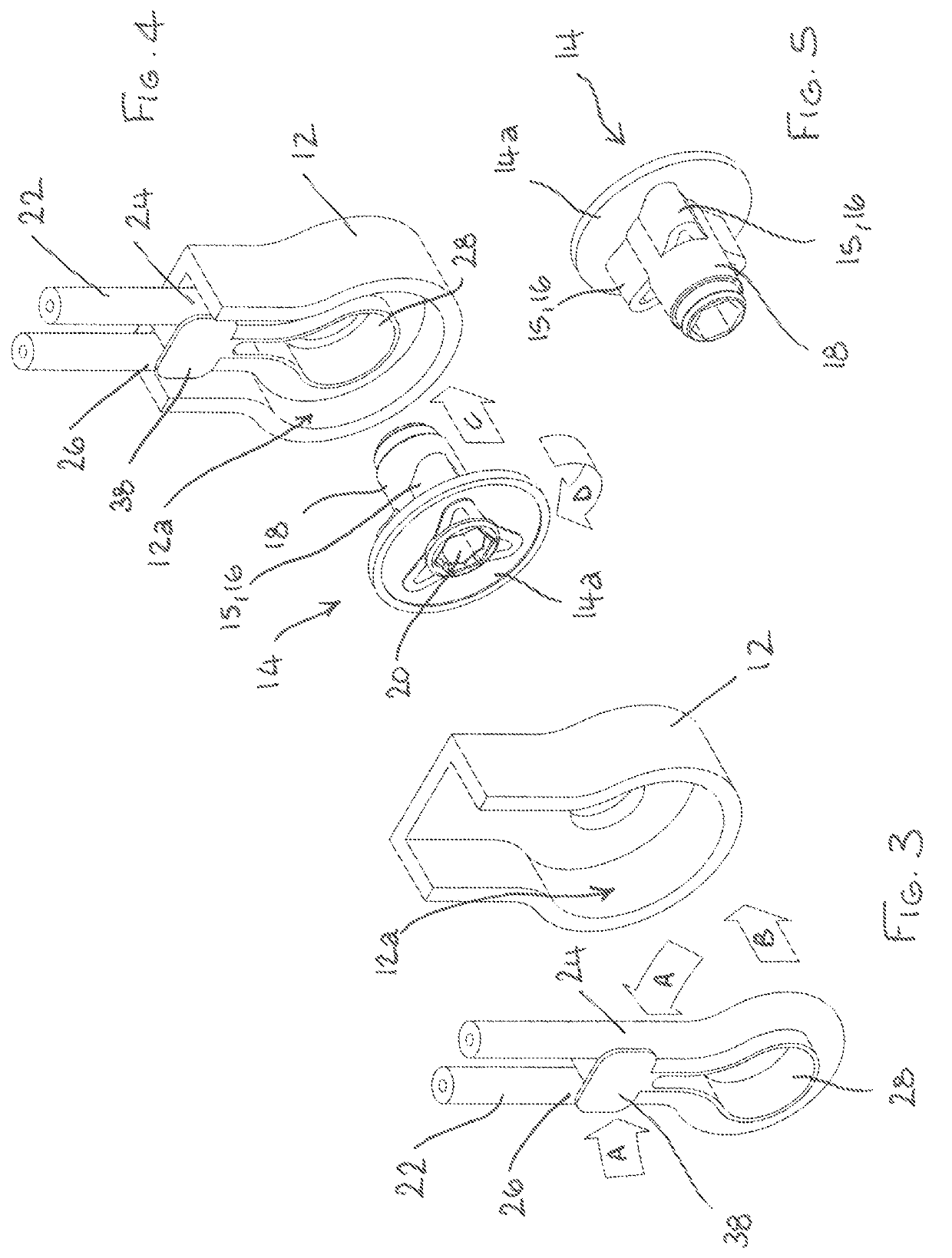Peristaltic pumps
a technology of peristaltic pumps and flexible tubing, which is applied in the direction of positive displacement liquid engines, intravenous devices, suction devices, etc., can solve the problems of premature wear of flexible tubing, and achieve the effect of reducing friction forces
- Summary
- Abstract
- Description
- Claims
- Application Information
AI Technical Summary
Benefits of technology
Problems solved by technology
Method used
Image
Examples
first embodiment
[0040]FIGS. 1 to 5 illustrate a peristaltic pump 10 which includes a rotor 14 (best seen in FIG. 5), typically formed of a moulded substantially rigid plastics material. The rotor 14 includes a plurality of pressing members 15 in the form of lobes 16 which are integrally formed with, and project radially outwardly from, a spindle 18 and which are equally spaced around the circumference of the spindle 18. In the illustrated embodiment, the rotor 14 includes three lobes 16 but it will be appreciated that the rotor 14 can include any suitable number of lobes 16. The spindle 18 includes a central drive aperture 20 which can be engaged by an external rotary drive (not shown) such as the drive shaft of an electric motor.
[0041]The peristaltic pump 10 includes flexible tubing 22 which can be formed of any suitable resilient plastics material such as polyvinyl chloride. The flexible tubing 22 has an inlet side 24 through which liquid is delivered to the peristaltic pump 10 and an outlet side...
second embodiment
[0049]Referring now to FIGS. 6 to 12, there is shown a peristaltic pump 50. The peristaltic pump 50 shares many features in common with the peristaltic pump 10 illustrated in FIGS. 1 to 5 and corresponding features are designated using corresponding reference numerals. The differences between the peristaltic pumps 10, 50 will now be explained.
[0050]The peristaltic pump 50 includes a rotor 52 (best seen in FIG. 11) which includes two diametrically opposed lobes 54 that are integrally formed with, and project radially outwardly from, the spindle 18. As best seen in FIGS. 6a and 6b, each lobe 54 has a curved or arcuate pressing surface 54a whose radius relative to the spindle axis increases gradually and smoothly. The pressing surface 54a progressively compresses the flexible tubing 22 against the inner wall 12a of the cylindrical stator 12 as the rotor 52 rotates in the cylindrical stator 12 in the clockwise direction. Each lobe 54 also has an apex 54b at which the pressing surface 54...
PUM
 Login to View More
Login to View More Abstract
Description
Claims
Application Information
 Login to View More
Login to View More - R&D
- Intellectual Property
- Life Sciences
- Materials
- Tech Scout
- Unparalleled Data Quality
- Higher Quality Content
- 60% Fewer Hallucinations
Browse by: Latest US Patents, China's latest patents, Technical Efficacy Thesaurus, Application Domain, Technology Topic, Popular Technical Reports.
© 2025 PatSnap. All rights reserved.Legal|Privacy policy|Modern Slavery Act Transparency Statement|Sitemap|About US| Contact US: help@patsnap.com



